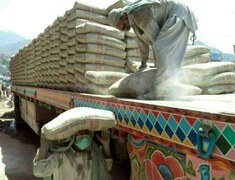EDITORIAL: The DG ISPR’s press conference was as revealing and instructive as it was necessary, especially since the insurgency has clearly been gaining momentum and the nation needed clarity on the scope and contours of Azm-i-Istehkam; which, it’s been clarified, is more a “comprehensive and multi-domain counter-terror campaign” than just a military operation. This was important, considering the political propaganda attached to it since its announcement a few weeks ago.
Yet it’s very disappointing that the government did not take the lead in reaching out to the people, leaving the military, once again, to go it alone. Ideally the defence, interior and information ministries should have collaborated to make sure that the people are not left in the dark about anything, at any point, when it comes to what is effectively another war on the state. But the government was nowhere to be seen as the military was left to deflect the criticism launched towards it as well as the administration.
There are also other, even more crucial, areas where the government is more than a little behind the curve. Counter-terrorism is not a job for the military alone. When armed forces clear and hold an area, cleansing it of terrorists, then the civilian apparatus must step in quickly and take over reconstruction and rebuilding responsibilities ahead of empowering local administrations to take control.
When such arrangements are missing, as has been the case in our own war against terrorism, then the military must go back to such areas to clear them again and again of terrorists that keep re-emerging to exploit the political vacuum. This is a textbook counter-terror strategy, yet even after such long experience with insurgencies and losing no less than 80,000 people to it, it seems our government has still not learned the right lessons.
It’s also a known fact that repeated anti-terror military operations breed resentment against the armed forces among local people. That’s only natural, because wars, by their very nature, disrupt lives, households, and local economies. And when the civilian government repeatedly fails to establish local control following military operations, forcing the army to return, it’s only natural for people to get upset.
In fact, as our previous experience with the TTP insurgency shows, there are often cases when people begin to side and sympathise with insurgents just because of their frustrations with the military; and the fact that the army will go away but the terrorists will eventually return.
As the government rehashes the National Action Plan to give it more teeth and make the fight more effective, it must also learn valuable lessons from past experiences. The new century saw many insurgencies, both in Asia and the Middle East. Everywhere success came only when governments realised the importance of immediate civilian control after military operations, otherwise the same cycle just kept repeating itself. The Pakistani government, on the other hand, seems completely consumed with the politics of the day to give other things, even something as important as the insurgency, the attention they deserve.
TTP (Tehreek-e-Taliban Pakistan) resumed its assault on Pakistan not long after the Taliban came back to power in Afghanistan, despite all the assurances from the latter. Yet first the PTI government tried to appease it and now the PML-N-led coalition is happy to let the military control all aspects of it.
Both approaches are self-defeating. It is definitely Islamabad’s weakness that even after a couple of years, it’s not been able to get Kabul to sideline TTP – as it promised when Pakistan facilitated the US withdrawal after two decades of war on terror.
The state must sort out its strategy immediately. It seems the DG ISPR’s press conference was meant to enlighten the people as well as jolt the government into proper, decisive action.
Copyright Business Recorder, 2024























Comments
Comments are closed.